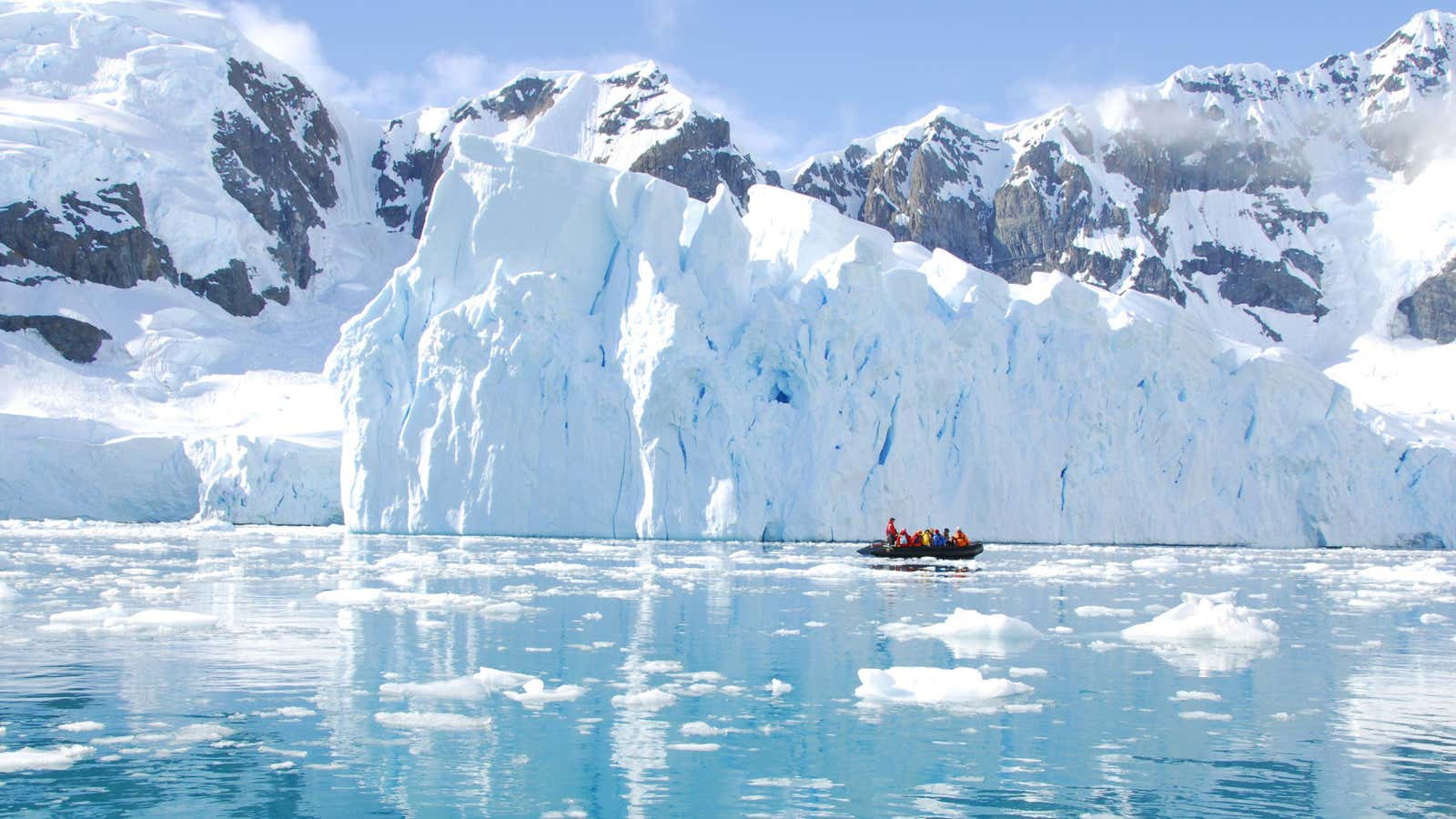Of Course You Can Go to Antarctica (but Here’s Why You Shouldn’t)

Over the past few years, travel to Antarctica has gone from a “rare and treacherous expedition” to a “mass vacation”. However, as multiple sources point out – see this New York Times report or this 2014 excerpt from John Oliver – the rise in tourism to Antarctica poses a serious threat to the environment.
However, when you search for “reasons not to go to Antarctica,” you’ll find travel sites encouraging you to go , or sarcastic travel bloggers pretending not to encourage you to go. Ecotourism is all the rage and I understand the instinctive desire to visit the most remote continent on earth. However, the negative impact of people visiting Antarctica may be even more severe than previously thought. Whether you’re an adventurer booking your next thrill or you’re planning to escape the turmoil on your current continent, here’s why, according to science, you should rethink your Antarctic travel.
New study confirms the negative impact of human visitors
A study published in the journal Nature Communications this week found that areas surrounding research centers and popular tourist sites have significantly higher levels of black carbon than average; the result is that the snow is melting and shrinking even faster than the current backdrop of climate change threatening the area.
According to Science Alert , this study “confirms similar studies elsewhere on the role of black carbon emissions in accelerating ice and snow melt”, showing that the impact of human activity is “more pervasive and insidious” than it appears on the surface. When people visited Antarctica extremely infrequently, it was harder to quantify their impact. Now that Antarctica is becoming a major tourist destination, we can’t ignore the science: our carbon footprint is destroying everything.
The visitors are only adding to the strain on a region already suffering from the effects of climate change. As such, travel to the continent is limited due to the combined efforts of the Antarctic Treaty , IAATO , Antarctic tour operators and Antarctic Ambassadors. But if you’ve already planned your trip, there are guidelines to help you minimize your environmental impact.
How to minimize the consequences of a trip to Antarctica
In addition to the study published this week, there are many ways tourism could threaten Antarctica’s fragile ecosystems. Please take into account the following site visitor policies established by the parties to the Antarctic Treaty to minimize your impact on the environment:
1) Do not use aircraft, ships, small boats or other vehicles in a way that would interfere with wildlife either at sea or on land.
2) Do not feed, touch or handle birds or seals, or approach or photograph them in such a way that they change their behaviour.
3) Do not damage plants, for example, by walking, eating or landing on extensive moss beds or talus slopes covered with lichens.
4) Do not use weapons or explosives. Keep noise to a minimum so as not to scare wild animals.
5) Do not bring non-native plants or animals into Antarctica (eg live poultry, pet dogs and cats, houseplants).
Essence of the South Pole
Believe me, I have a desire to go to Antarctica; it is the indescribable beauty of the landscape, a combination of thrill and solitude, and the opportunity to say that you have been to the most remote corners of the planet. In addition, you might argue that any journey has a devastating effect and results in carbon emissions, especially when that journey involves a large plane or boat. But at least other tourist destinations have a local economy that benefits from your tourism. This does not apply to Antarctica. As travel to the continent becomes more affordable, it’s becoming harder to justify the threat to Antarctica’s fragile ecosystems.
In the meantime, I recommend you get rid of your Antarctic itch by watching this episode of Netflix’s ” Our Planet “ , this episode of Natural Geographic’s “Antarctica Stormed” or maybe even the BBC’s ” Highest Moments of Antarctic Animals ” collection.